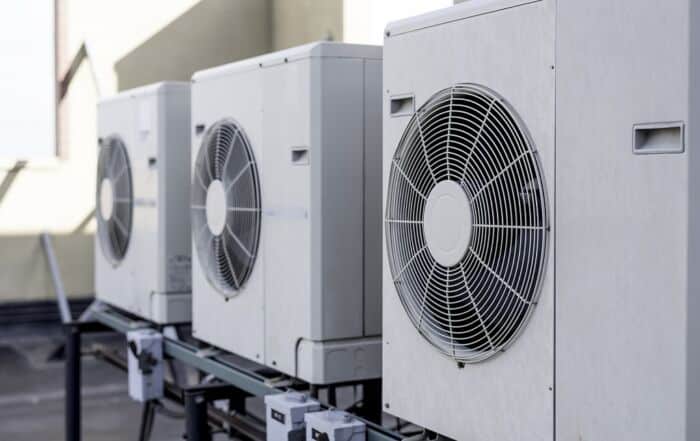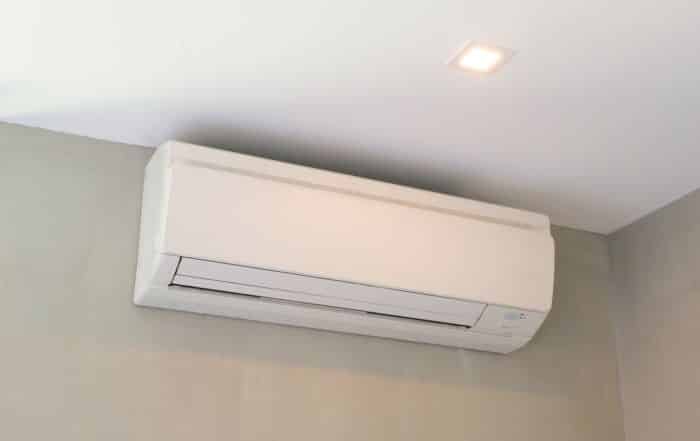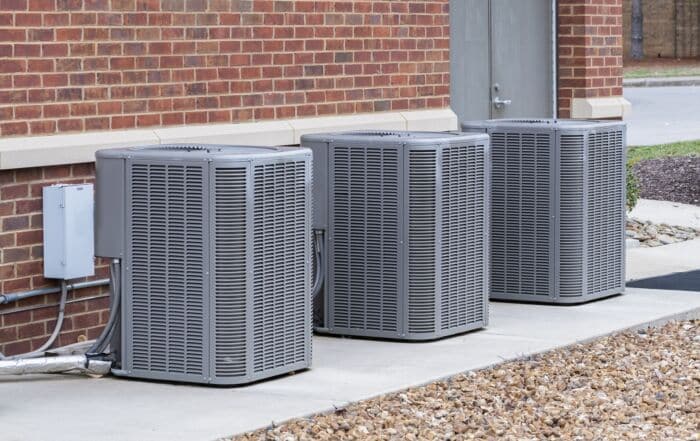The AC float switch, like many other components of your HVAC system, is critical to the overall operation of the system. Everything you need to know about the HVAC float switch, such as what is it and why you need one, will be covered right here.
Your HVAC system's air conditioning float switch is an electronic water sensor. Also known as the condensate overflow switch or the AC safety switch, it is a preventative measure for a water overflow that the drainpipe cannot handle. The float switch enables your system to detect and respond to clogged drains so it does not cause damage to the system or your home.
Removing Moisture From the Air
When an air conditioner is running, it draws moisture from the air. This is one way that helps us feel cooler when humidity or moisture is removed from the air. What happens to this moisture? In most modern air conditioner systems, there are two drains - a primary and secondary. Usually the primary drain from the HVAC unit feeds into a bathroom drain, so it simply drains into the house's normal sewer system. Over time, this drain can clog up - dust, spiders, algae etc. When this happens, the AC drain line backs up, and water cannot drain through this line. Here is where the secondary drain comes into play. If you have a horizontal HVAC system, you'll have a large tray under the air handler. Connected to this tray is a simple drain connection, which runs to the outside of the house, usually to the closest overhang. With the primary drain line blocked, the tray fills with water, which then drains away down to the outside. If this is happening, you'll see drips of water coming out of the pipe on the exterior of your house.
These drain lines are in place to prevent water from damaging your home or HVAC system. Damage such as mold growth and structural damage. So it's very important to monitor the operation of the condensate drains.
Clogged AC Drain Lines
An AC drain can stop working if the drain lines are clogged with debris or dirt and can no longer effectively remove water. When the level of water in the drain pan exceeds a certain threshold, the float switch device will trigger and send a signal to the AC unit, which makes it turn off. By doing so, the AC unit no longer removes moisture out of the air, no more condensate, and no chance of damage to your home. Now your home gets warm because the AC stopped running, but at least you avoid a potential water leak disaster. It's easier and less expensive to fix a clogged drain than repair damage to the attic or walls or having unhealthy air blowing around the house.
At Dallas Heating and Air Conditioning, we advise all of our customers to clean out the drains every year. It's cheap and quick, and avoids issues such as your AC shutting down in the middle of the day in summer.
Where Can I Find the Float Switch?
The orientation of your HVAC system determines the location of the float switch. The safety switch in a horizontal unit can be either in the secondary drain pan or primary drain line. The primary function of float switches in AC units is the same regardless of where and how they are installed.
It is also worth noting that AC float switches are not typically included with AC units, but are added in by the HVAC installers. They're quite easy to install or replace for both new and existing AC units. It's a small price to pay compared when compared to the high cost of repairing water damage.
Benefits of a Float Switch
It's such a small part of the system, but it provides many benefits as discussed below.
Help Prevent Water Damage in Your Home
If your air conditioner does not have a float switch, at some point, you are very likely to experience water damage in your home due to condensate overflowing. Water damage can be disastrous, destroying your home and furnishings, causing costly repairs. It monitors the system 24x7, when you're out or when you're sleeping. The safety switch will turn off your AC unit in time to prevent an overflow and leakage.
Cheap
AC float switches are very affordable. Installing them in your air conditioners is also inexpensive. The overall cost of installation far outweighs the cost of problems that may arise as a result of not having one. You can find AC float switches at local hardware stores like Home Depot starting around $20.
Avoid Unhealthy Air
When the AC drainpipe overflows, the water that spills inside the unit can promote mold growth. The mold organisms grow in your air conditioner and may spread all around your home, possibly leading to a variety of health problems. The safety switch will reduce their chances of this happening
Indication That Your HVAC System Needs Repairing
When the float switch triggers your air conditioner to shut down, you'll know there's a problem. This means you will most likely call in an AC expert at a time when it is easier to fix the problem that's causing the AC drainage issue. You will be able to use your air conditioner again once the problem has been resolved. It's a common issue we see all the time. It's also a quick and inexpensive service call, usually completed within an hour.
Summary
AC float switches are excellent for use with all types of air conditioners. They are highly recommended if you want to avoid water damage caused by AC use. They provide several advantages, and the cost of installing them is also very reasonable.
Call the AC professionals at Dallas Heating and Air Conditioning if you ever have any issues with your HVAC system.
Related Posts
Exploring Ductless Air Conditioning Systems for Small Spaces
If you’re a homeowner tired of sweating through sweltering summers, a ductless air conditioning [...]
Signs Your Air Conditioning Unit Needs Professional Maintenance
Imagine coming home on a sweltering summer day only to find that your air [...]
Common Misconceptions About Air Conditioning Usage and Costs
Air conditioning units are a staple in many homes, especially during the hot summer [...]


